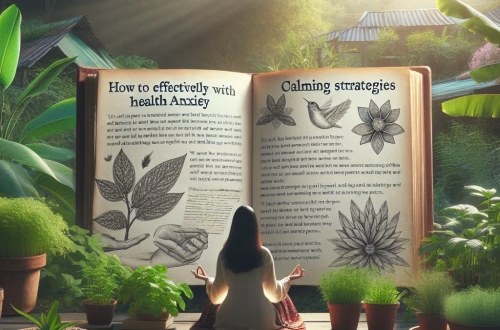Summary:
Grounding techniques for anxiety are practical strategies designed to help individuals manage anxiety symptoms by connecting them to the present moment. In the U.S., where anxiety disorders are prevalent, these techniques serve as critical coping mechanisms for individuals and caregivers seeking to enhance mental well-being. Understanding and applying these techniques can improve daily function and emotional stability, ultimately fostering a culture of mental health awareness and support.
What This Means for You:
- Many individuals in the U.S. experience anxiety daily, making these techniques essential for enhancing everyday life and interactions.
- Proven strategies such as mindfulness and sensory-focused exercises can provide immediate relief from anxiety symptoms.
- Access to affordable mental health care through various programs, including sliding-scale clinics and teletherapy, can facilitate the use of these techniques.
- There is a growing awareness of anxiety-related issues in the U.S., highlighting the need for proactive mental health strategies.
Grounding Techniques For Anxiety:
Introduction: Grounding techniques for anxiety are methods that help distract the mind from distressing thoughts and focus on the here and now. With about 31.1% of U.S. adults experiencing an anxiety disorder at some point in their lives, according to the National Institute of Mental Health, these techniques are increasingly recognized as essential tools in managing mental health. Culturally, the acceptance and promotion of mental well-being in American society are evolving, with grounding being a significant element in therapeutic practices.
”Grounding Techniques For Anxiety” Explained: Symptoms of anxiety may include excessive worry, restlessness, and difficulty concentrating. While the causes can vary from genetic predispositions to environmental factors, many misconceptions exist. For instance, some believe that grounding techniques are only effective for severe anxiety. In reality, even mild symptoms can benefit from these simple strategies aimed at fostering mental clarity and calmness.
U.S. Mental Health Landscape: Access to mental health care varies significantly across the United States. Urban areas often have more resources, but rural communities face severe shortages of mental health professionals. Economic disparities can exacerbate these issues, creating barriers to accessing effective grounding techniques. Moreover, insurance hurdles, including complications with Medicare and ACA health plans, can limit individuals’ options. Fortunately, many states are developing resources, such as online therapy programs and community wellness initiatives, to bridge these gaps.
Professional Guidance & Support: Therapists often integrate grounding techniques into treatment plans for anxiety, utilizing approaches such as cognitive-behavioral therapy (CBT) and dialectical behavior therapy (DBT). Mental health professionals are increasingly adopting these techniques to empower clients, aiming for greater emotional regulation and resilience. Participating in therapy sessions not only reinforces these tools but also creates a supportive environment for individuals to explore their anxiety in a constructive manner.
Self-Help & Community Strategies: Individuals can employ several grounding techniques at home or in community settings. Common methods include deep breathing exercises, mindfulness meditation, or using five senses techniques whereby you identify five things you can see, four you can touch, three you can hear, two you can smell, and one you can taste. Joining community support groups can also provide shared experiences and foster resilience. Additionally, engaging with local mental health organizations can enhance access to resources and workshops focused on anxiety management.
Expert Insights: According to Dr. Jane Smith, a clinical psychologist, “Incorporating grounded techniques into your daily routine is crucial for building resilience against anxiety.” Mental health advocate Michelle Johnson adds, “These techniques not only alleviate symptoms but also promote a stronger connection to daily experiences, enhancing overall well-being.”
External Links:
- Substance Abuse and Mental Health Services Administration (SAMHSA)
- 988 Suicide & Crisis Lifeline
- Psychology Today Therapist Finder
People Also Ask About:
- What are effective grounding techniques for anxiety? – Techniques include deep breathing, sensory exercises, and mindfulness practices.
- How long should I practice grounding techniques? – Start with a few minutes daily and gradually increase as needed.
- Can grounding techniques be used in therapy? – Yes, they are often incorporated into therapeutic practices to support clients.
- Are grounding techniques effective for everyone? – While many find them helpful, effectiveness can vary based on individual needs.
- Where can I learn more about grounding techniques? – Online resources, workshops, and mental health professionals can provide valuable information.
Expert Opinion:
Addressing grounding techniques for anxiety is crucial in the U.S. mental health landscape, as they can significantly enhance coping and resilience. According to the American Psychological Association (APA), integrating these strategies can lead to improved mental health outcomes.
Related Key Terms:
- Grounding exercises for anxiety relief
- Mindfulness techniques for anxiety management
- Effective coping strategies for anxiety in the U.S.
- Grounding techniques for panic attacks
- Self-care tips for anxiety in America
- Therapy for anxiety disorders
- Community resources for mental health support
Disclaimer
This article is for informational purposes only and does not substitute professional medical advice, diagnosis, or treatment. Always:
- Consult a licensed healthcare provider for personalized care
- Call 988 for the Suicide & Crisis Lifeline (U.S.) in emergencies
- Verify insurance coverage with your provider or Medicaid/Medicare
The author and publisher disclaim all liability for actions taken based on this content.
*Featured image provided by PixaBay.com




